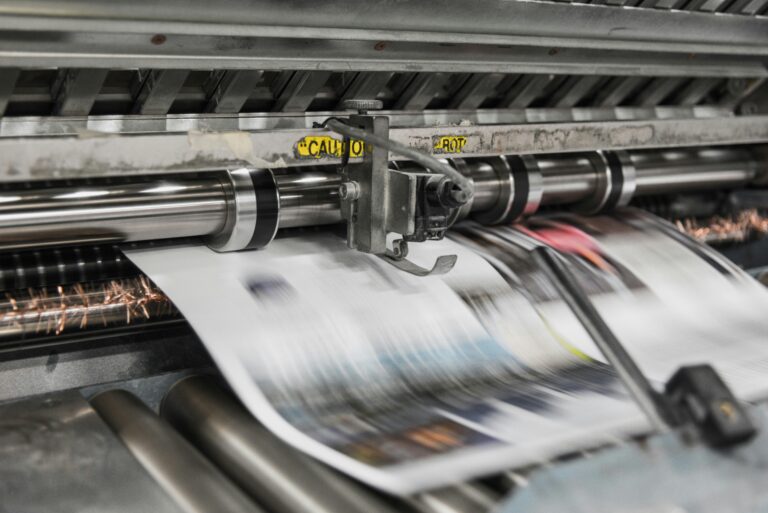
Streamlining Government Operations: A Deep Dive into Multifunctional Devices, GovPrint, Managed Print, and Digital Workflows



In today’s digital age, Government departments face increasing pressure to optimise efficiency, enhance security, and reduce costs. A critical, yet often overlooked, area for improvement lies in managing print and document workflows. The Crown Commercial Service (CCS) offers a Framework of solutions designed to address these challenges, encompassing Multifunctional Devices (MFDs), GovPrint hardware, Managed Print Provision (MPP), and Digital Workflow software.
Therefore, this blog provides a comprehensive overview of these solutions, exploring supplier requirements, Government needs, cost-saving potential, and specific departmental applications.
Many Government organisations struggle with fragmented print infrastructures, leading to uncontrolled spending, security vulnerabilities, and inefficient processes. Hidden costs, such as wasted paper, redundant printing, and manual document handling, can significantly drain budgets. Industry estimates suggest that organisations can slash print-related costs by up to 30% through effective management. Furthermore, the diverse needs of Government departments—from local councils to national agencies—require tailored solutions.
Firstly, MFDs have evolved from simple printers to sophisticated document processing hubs, offering scanning, copying, faxing, and even advanced document management capabilities.
• Supplier Requirements: Suppliers must offer a broad spectrum of MFDs, ranging from high-volume production machines to compact desktop models. Devices should adhere to industry standards and security certifications, emphasising energy efficiency, durability, and ease of maintenance. Transparent pricing structures, including volume discounts and leasing options, are essential, along with clearly defined Total Cost of Ownership (TCO).
• Government Needs: Government departments prioritise security, reliability, and interoperability with existing systems. Key considerations include print speed, paper handling, finishing options, and accessibility features. As well as this, integration with secure authentication systems is paramount.
Department-specific examples include:
• Justice/Law Enforcement: High-security MFDs with advanced encryption and audit trails are crucial for handling sensitive legal documents.
• Education: Robust, high-volume MFDs are needed for printing student materials and administrative documents, often with a focus on cost-effectiveness.
• Healthcare: Reliable MFDs with secure printing features for patient records, integrated with Electronic Health Record (EHR) systems, are essential.
• Central Government: A mix of MFDs may be required, from high-speed production units for large-scale document processing to smaller, secure devices for ministerial offices.
For Government, secure printing is non-negotiable. GovPrint hardware is specifically designed to meet these stringent requirements.
• Supplier Requirements: GovPrint hardware must meet rigorous security standards, including secure print release, encryption, and comprehensive audit trails. In addition, suppliers must demonstrate compliance with Government security standards and provide necessary certifications. Compatibility with Government IT infrastructure and secure communication protocols are mandatory.
• Government Needs: Protecting sensitive data and preventing unauthorised access are paramount. Compliance with data protection regulations is essential. Also, solutions must be scalable and adaptable to evolving threats.
Department-specific examples include:
• Revenue/Tax Agencies: GovPrint solutions must ensure the confidentiality and integrity of taxpayer data, adhering to strict regulatory requirements.
• Local Government: Cost-effective GovPrint hardware, such as printing permits and licenses, may be prioritised.
• Defence: Highly secure, ruggedised GovPrint hardware capable of operating in challenging environments, with stringent security protocols for classified information, is required.

Next, MPP services alleviate the burden of managing print infrastructure, allowing Government IT teams to focus on strategic initiatives.
• Supplier Requirements: MPP providers must offer proactive maintenance, automated supply management, and detailed reporting tools. Expertise in managing diverse print environments and robust Service Level Agreements (SLAs) are essential. In addition, data security and confidentiality are paramount. Transparent pricing models, including per-page costs and fixed monthly fees, are necessary for accurate budgeting.
• Government Needs: Cost reduction, improved efficiency, and enhanced security are primary drivers for MPP adoption. Visibility into print usage and costs is crucial. Also, flexible solutions tailored to specific departmental needs are essential.
• Department-Specific Examples: All departments can benefit from MPP. However, smaller departments may opt for fully managed services, while larger ones may prefer a hybrid approach.
Digital workflow software transforms paper-based processes into efficient digital workflows, streamlining operations and reducing reliance on paper.
• Supplier Requirements: Suppliers must offer software solutions that enable document capture, workflow automation, document management, and collaboration. Solutions should be scalable, secure, and integrable with existing systems. Comprehensive training and support are essential. Flexible pricing models, considering factors like user numbers and document volume, are necessary.
• Government Needs: Streamlining processes, reducing paper usage, and improving data accuracy are key drivers. Solutions must comply with accessibility standards and support secure document sharing. Integration with Government portals and systems is often required.
Department-specific examples include:
• Health: Digital workflow software integrated with EHR systems enables secure document sharing and streamlined patient record management.
• Social Services: Solutions that facilitate efficient processing of applications and case files improve service delivery.
• Planning/Development: Software supporting digital submission and processing of planning applications reduces paper usage and enhances transparency.
• All Departments: Can leverage digital workflow software to automate internal processes like invoice processing, HR onboarding, and contract management.
• Security: Paramount across all solutions.
• Interoperability: Seamless integration with existing systems.
• Scalability: Adaptability to evolving needs.
• Value for Money: Demonstrable cost savings and ROI.
• Sustainability: Environmentally friendly solutions.
• Accessibility: Compliance with accessibility standards.
Therefore, by leveraging the solutions available through the CCS Framework, Government departments can significantly improve their print and document management practices. From reducing costs and enhancing security to streamlining workflows and promoting sustainability, these technologies empower Government organisations to better serve their citizens in the digital age.
GovData is a team of Public Sector experts who manage, review, and submit bids for companies looking to expand their work in the Public Sector.
So, if you want to find out more information on our live opportunities, you can visit our Frameworks page. Also, you can call us on 01925 269 600 or email [email protected] to get in touch.